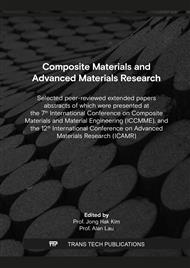p.9
p.15
p.21
p.29
p.37
p.43
p.51
p.57
p.63
Study of Dry Sliding Wear Behaviour of Silicon Carbide Filled Glass-Jute Hybrid Epoxy Composite Using RSM and Taguchi Techniques
Abstract:
Dry sliding wear behaviour of Silicon Carbide (SiC) filled glass-jute hybrid epoxy composite has been studied using Response Surface Methodology (RSM) and Taguchi method. RSM developed the regression model for wear loss (WL) and coefficient of friction (COF) as function of sliding velocity, filler content and normal load. Taguchi orthogonal array provided the design of experiment and optimization with sliding velocity, filler content and normal loads, as the control factors with three levels. The ‘smaller-is-better’ characteristic was used to calculate the S/N ratio based on the experimental data. The model accuracy of the developed regression models for WL and COF were obtained. ANOVA analysis was performed to determine the percentage contribution of various control factors on the WL and COF.
Info:
Periodical:
Pages:
37-42
Citation:
Online since:
May 2022
Authors:
Price:
Сopyright:
© 2022 Trans Tech Publications Ltd. All Rights Reserved
Share:
Citation:



